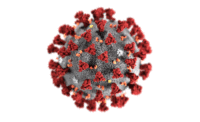OSHA announced in a recent press release that it will soon issue a compliance directive to ensure uniform procedures when conducting inspections to identify and minimize or eliminate high to very high risk occupational exposures to the 2009 H1N1 influenza A virus.
The Directive will closely follow the CDC’s Interim Guidance on Infection Control Measures for 2009 H1N1 Influenza in Healthcare Settings, Including Protection of Healthcare Personnel.
In response to complaints, OSHA inspectors will ensure that healthcare employers implement a hierarchy of controls, including source control, engineering, and administrative measures, encourage vaccination and other work practices recommended by the CDC. Where respirators are required to be used, the OSHA Respiratory Protection standard must be followed, including worker training and fit testing.
The CDC recommends the use of respiratory protection that is at least as protective as a fit tested disposable N95 respirator for healthcare personnel who are in close contact (within 6 feet) with patients with suspected or confirmed 2009 H1N1 influenza.
"Employers should do everything possible to protect their employees," Acting Assistant Secretary of Labor Jordan Barab said. Barab emphasized, however, that where respirators are not commercially available, an employer will be considered to be in compliance if the employer can show that a good faith effort has been made to acquire respirators. The employer will also need to implement a hierarchy of controls such as feasible engineering controls, administrative controls, and the use, as appropriate, of personal protective equipment, such as gloves and respirators to protect workers while providing close-contact care.
Since a shortage of disposable N95 respirators is possible, employers are advised to monitor their supply, prioritize their use of disposable N95 respirators according to guidance provided by CDC, and to consider the use of elastomeric respirators and facemasks if severe shortages occur. Healthcare workers performing high hazard aerosol-generating procedures (e.g., bronchoscopy, open suctioning of airways, etc.) on a suspected or confirmed H1N1 patient must always use respirators at least as protective as a fit-tested N95, even where a respirator shortage exists. In addition, an employer must prioritize use of respirators to ensure that sufficient respirators are available for providing close-contact care for patients with aerosol-transmitted diseases such as tuberculosis.
Where OSHA inspectors determine that a facility has not violated any OSHA requirements but that additional measures could enhance the protection of employees, OSHA may provide the employer with a Hazard Alert Letter outlining suggested measures to further protect workers.
OSHA to issue directive on H1N1-related inspection procedures (10/23)
Looking for a reprint of this article?
From high-res PDFs to custom plaques, order your copy today!





